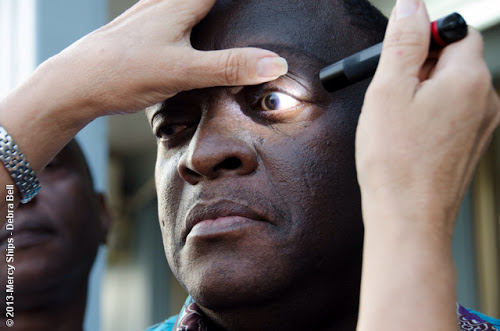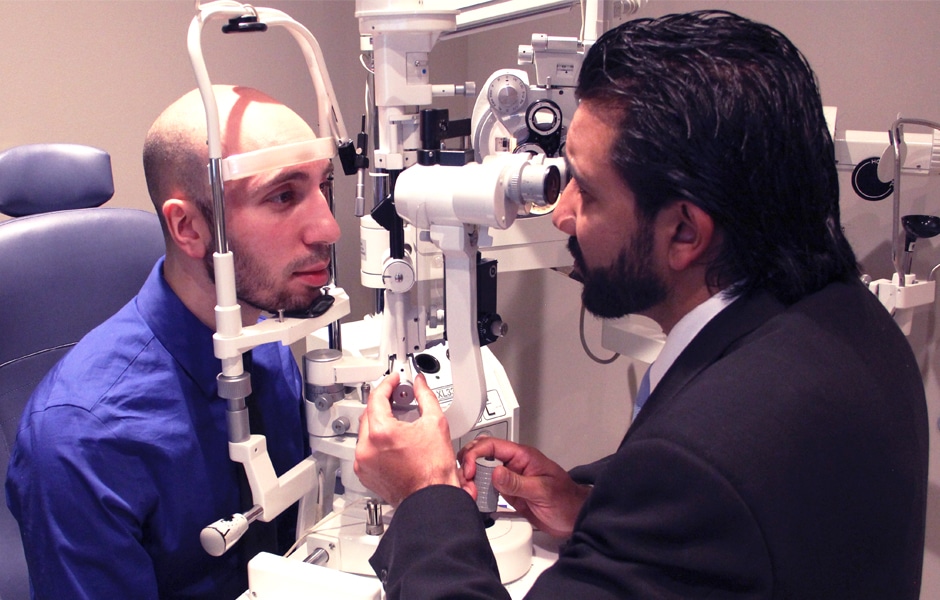Eye Center Andalusia: State-of-the-Art Care for All Ages
Eye Center Andalusia: State-of-the-Art Care for All Ages
Blog Article
Understanding the Different Vision Adjustment Procedures Available for Clearer Sight
In the realm of vision adjustment procedures, a wide range of choices exist to resolve refractive errors and provide individuals with more clear sight. Let's check out the intricacies of these treatments and lost light on the path to accomplishing boosted vision clarity (Eye Center Andalusia).
LASIK Surgery
LASIK surgical procedure is an usual refractive procedure utilized to deal with vision troubles such as astigmatism, nearsightedness, and farsightedness. This medical technique, which represents Laser-Assisted sitting Keratomileusis, aims to reshape the cornea to improve just how light is concentrated on the retina, ultimately improving vision clearness. Throughout the treatment, a slim flap is created on the cornea, and a laser is used to eliminate exact quantities of cells to improve it appropriately. This reshaping allows for light to be precisely focused onto the retina, remedying refractive mistakes.
One of the main benefits of LASIK surgical treatment is the rapid renovation in vision experienced by clients. Overall, LASIK surgery is a prominent choice for people looking for a long-lasting solution for their vision troubles.
PRK Procedure

PRK is a suitable alternative for people with slim corneas or those at a greater danger of eye injuries, as it does not involve creating a corneal flap. The healing process for PRK is a little longer contrasted to LASIK, as the epithelium needs time to regrow. People might experience pain and blurry vision for a couple of days adhering to the procedure.
Despite the longer healing time, PRK can produce exceptional lead to vision improvement, making it a beneficial choice for those who might not appropriate candidates for LASIK surgical treatment. - Neurologist Andalusia
Implantable Lenses
In contrast to PRK where the cornea is improved straight, implantable lenses offer an additional approach for dealing with vision by putting fabricated lenses inside the eye. This treatment is especially valuable for people with high levels of astigmatism, nearsightedness, or farsightedness who may not be suitable candidates for laser surgeries like LASIK or PRK.
Implantable lenses, also called phakic intraocular lenses, job by supplementing the eye's natural lens with an artificial one. These lenses can be placed before the all-natural lens (anterior chamber) or behind the iris and before the all-natural lens (posterior chamber) By adjusting the power and positioning of these lenses, ophthalmologists can effectively deal with refractive mistakes and enhance aesthetic skill.
One benefit of implantable lenses is that they are detachable and exchangeable, offering adaptability for future changes. As with any medical treatment, there are risks involved, such as infection or cataract formation. People thinking about implantable lenses ought to pop over here seek advice from an eye care professional to figure out the most appropriate option based upon their private demands and eye health.
Corneal Rings

The treatment for inserting corneal rings is minimally intrusive and relatively quick, commonly executed as an outpatient treatment. During the surgical procedure, the ophthalmologist makes a little cut in the cornea and inserts the rings at a certain deepness. When in position, the rings help to improve the cornea, providing a smoother surface for light to enter the eye, which can result in more clear vision.
Corneal rings are considered a relatively easy to fix treatment, as they can be gotten rid of or changed if essential. While they may not completely eliminate the demand for glasses or call lenses, corneal rings can substantially boost vision top quality and general visual comfort for people with keratoconus or various other corneal abnormalities.
Refractive Lens Exchange
Adhering to the improvement of corneal abnormalities with procedures like corneal rings, another vision correction strategy that can attend to refractive mistakes is Refractive Lens Exchange (RLE) RLE is a medical procedure that entails changing the eye's natural lens with an artificial intraocular lens (IOL) to deal with refractive errors such as farsightedness, presbyopia, and nearsightedness. This procedure is particularly valuable for individuals that might not be appropriate prospects for procedures like LASIK or PRK due to aspects such as thin corneas or high refractive errors.
RLE belongs to cataract surgery, as both entail getting rid of the eye's all-natural lens; nevertheless, in RLE, the lens is clear, not gloomy as in cataracts. The synthetic lens dental implanted during RLE can be tailored to deal with the person's particular refractive mistake, offering clear vision at numerous distances. Healing time for RLE is relatively quick, and clients can anticipate improved vision quickly after the treatment. As with any kind of medical procedure, possible risks and difficulties exist, so a detailed assessment with an eye treatment expert is necessary to figure out if RLE is the ideal vision modification alternative.
Conclusion

In the realm of vision published here adjustment treatments, a wide variety of choices exist to address refractive mistakes and offer individuals with more clear sight.LASIK surgery is an usual refractive procedure made use of to fix vision problems such as nearsightedness, farsightedness, and astigmatism.While additionally a common refractive treatment, the PRK (Photorefractive Keratectomy) technique varies from LASIK surgery in its technique to fixing vision problems.Complying with the correction of corneal abnormalities with treatments like corneal rings, another vision modification technique that can resolve refractive errors is Refractive Lens Exchange (RLE) LASIK surgical procedure, PRK treatment, implantable lenses, corneal rings, and refractive lens exchange are all choices that can attend to various vision problems.
Report this page